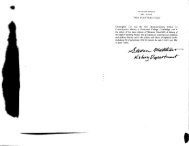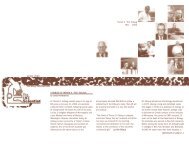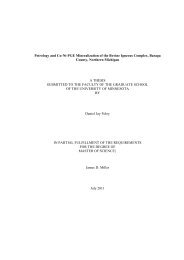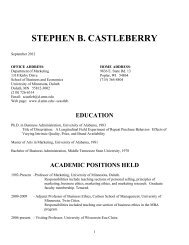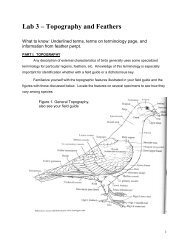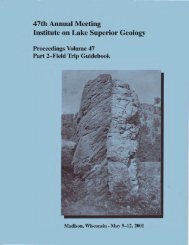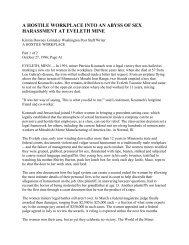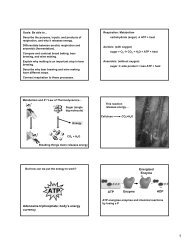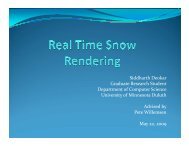Program, Abstracts, and Guidebooks - University of Minnesota Duluth
Program, Abstracts, and Guidebooks - University of Minnesota Duluth
Program, Abstracts, and Guidebooks - University of Minnesota Duluth
You also want an ePaper? Increase the reach of your titles
YUMPU automatically turns print PDFs into web optimized ePapers that Google loves.
-8-<br />
SYNTHESIS OF EARLY PRECAMBRIAN STRATIGRAPHY<br />
NORTH OF LAKE SUPERIOR<br />
LORNE D. AYRES<br />
Ontario Department <strong>of</strong> Mines<br />
Toronto<br />
A section from Lake Superior Park to Geraldton, Ontario crosses three<br />
major, east-trending, Early Precambrian, lithologic <strong>and</strong> structural elements<br />
<strong>of</strong> the Superior Province <strong>of</strong> the Canadian Shield. From south to north these<br />
are the northern part <strong>of</strong> the Abitibi isl<strong>and</strong> arc, the Quetico sedimentary<br />
basin, <strong>and</strong> the southern part <strong>of</strong> the Keewatin isl<strong>and</strong> arc.<br />
Both the Abitibi <strong>and</strong> Keewatin arcs are formed from coalescing, subaqueous,<br />
basaltic shield volcanoes capped by subaerial to subaqueous, felsic to<br />
intermediate pyroclastic cones. Volcaniclastic greywacke sequences derived<br />
from felsic volcanism accumulated in intervolcano basins <strong>and</strong> partly overlap<br />
the felsic pyroclastic deposits. Small trondhjemite cratons within the<br />
isl<strong>and</strong> arcs were a local sOurce <strong>of</strong> sedimentary detritus. Although the<br />
isl<strong>and</strong> arcs have easterly trends, individual basins <strong>and</strong> volcanoes have<br />
diverse trends.<br />
Along the north edge <strong>of</strong> the Abitibi arc from Schreiber to Wawa, three<br />
isolated sedimentary formations were deposited in intervolcano basins, but<br />
they are all tongues <strong>of</strong> an extremely thick greywacke <strong>and</strong> siltstone formation<br />
deposited in the Quetico basin north <strong>of</strong> the arc. The formations become<br />
progressively younger from west to east.<br />
The sedimentary rocks <strong>of</strong> the Quetico basin, which are equivalent to the<br />
Couchiching Formation <strong>of</strong> western Ontario, overlie <strong>and</strong> intertongue with. the<br />
volcanic formations <strong>of</strong> the Abitibi arc <strong>and</strong> the source area was probably within<br />
the arc. Along the north edge <strong>of</strong> the basin, however, the sedimentary rocks<br />
underlie <strong>and</strong> intertongue with the volcanic formations <strong>of</strong> the Keewatin arc.!<br />
In this area, Keewatin volcanism is thus younger than Abitibi volcanism.




